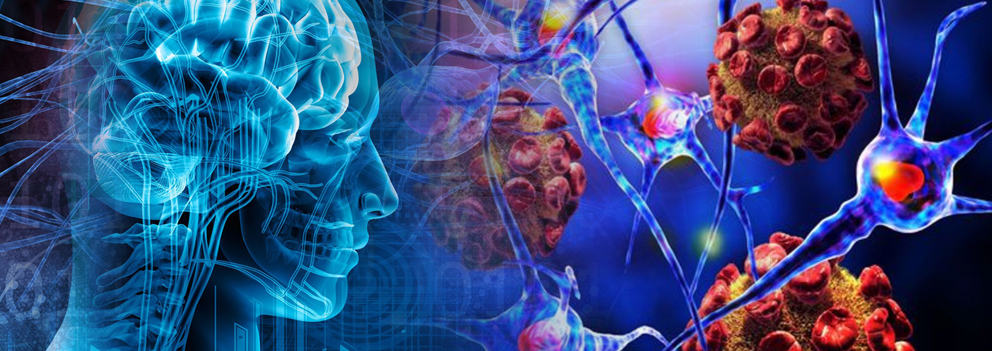If you or a loved one are battling Parkinson’s Disease, you might be exploring various treatment options beyond traditional methods. Parkinson’s Disease, a progressive neurological disorder, often leads to a decline in motor function and other complications. While conventional treatments focus on managing symptoms, stem cell therapy for Parkinson’s offers a promising alternative.
This innovative approach aims to restore function by potentially repairing damaged nerve tissues.
What is Parkinson’s Disease?
Parkinson’s Disease is a progressive neurological disorder that affects your movement and can significantly impact your quality of life. It occurs when nerve cells in the brain responsible for producing dopamine, a chemical that helps control movement, begin to deteriorate. While the exact cause is unknown, a combination of genetic and environmental factors may contribute. Symptoms tend to develop gradually and can vary from person to person. Here are some common symptoms you might experience:
- Tremors: Usually starting in a limb, often your hand or fingers.
- Slowed Movement (Bradykinesia): Over time, Parkinson's may slow your movement, making simple tasks difficult and time-consuming.
- Rigid Muscles: Muscle stiffness may occur in any part of your body. This can limit your range of motion and cause pain.
- Impaired Posture and Balance: Your posture may become stooped, or you may have balance problems as a result of Parkinson's.
- Loss of Automatic Movements: You may have a decreased ability to perform unconscious movements, including blinking, smiling, or swinging your arms when you walk.
- Speech Changes: You may speak softly, quickly, slur, or hesitate before talking. Your speech may be more monotonous than usual.
- Writing Changes: It may become hard to write, and your writing may appear small.
These symptoms worsen as the disease progresses, although the pace can vary significantly between individuals. There is currently no cure for Parkinson’s, but various treatments can help manage the symptoms. If you’re experiencing signs of Parkinson’s Disease, consider discussing them with a healthcare provider to explore diagnostic and management options.
Get an Appointment
Complete The Form Below And We’ll Get Back To You Immediately.
Get an Appointment
Complete The Form Below And We’ll Get Back To You Immediately.
Conventional Treatments for Parkison’s Disease
Conventional treatments for Parkinson’s Disease are diverse, each targeting different aspects of the disease to manage symptoms and improve the quality of life.
Here’s an overview of these treatments, highlighting their focus and inherent limitations.

Medications for Symptom Management
Often considered the most effective Parkinson’s medication, Levodopa is converted into dopamine in the brain, temporarily replenishing the diminishing supply. As the disease progresses, its effectiveness can decrease, requiring higher doses, which may lead to side effects such as nausea and dyskinesia. Other medications include dopamine agonists, which mimic the effects of dopamine, and MAO-B inhibitors, which slow down the breakdown of dopamine in the brain. These drugs manage symptoms effectively in the early stages but are not curative.
Surgical Interventions
Deep Brain Stimulation (DBS) involves implanting electrodes in certain brain areas connected to a generator implanted in the chest. DBS sends electrical pulses to the brain and can significantly reduce symptoms for some patients. However, DBS is not effective for all patients, involves significant risks such as brain hemorrhage or infection, and is costly. It requires precise patient selection and is not a cure but a means to manage symptoms more effectively.
Supportive Therapies
Physical Therapy aims to improve mobility, range of motion, and balance. Physical therapy helps manage the physical symptoms of Parkinson’s and can enhance a patient’s functional ability. However, its effects are supportive and do not slow down the progression of the disease.
Occupational Therapy: Helps patients adapt their living and working environments to maximize their independence and safety. Like physical therapy, occupational therapy focuses on adaptation and management rather than addressing the neurological deterioration underlying Parkinson’s.
Each of these treatments addresses the symptoms of Parkinson’s Disease from different angles, but none can halt or reverse the neurological decline at the heart of the condition. Their effectiveness tends to diminish over time as the disease progresses, underscoring the need for ongoing research into more definitive treatments or a potential cure for Parkinson’s Disease.
This is where regenerative therapies like stem cell therapy take the limelight.
Stem Cell Therapy for Pakinson’s Disease
Stem cell therapy for Parkinson’s disease represents a cutting-edge approach to treating a complex neurodegenerative disorder that primarily affects motor function. This therapy focuses on replacing or repairing the damaged neurons responsible for the characteristic symptoms of this disease, particularly the loss of neurons in the brain, which are crucial for regulating movement.
Stem cells Parkison’s treatment offers a fundamentally different approach from traditional treatments by targeting the root cause of the disease rather than merely managing its symptoms.
According to research published in the National Library of Medicine, stem cell therapy shows promise in treating Parkinson’s disease. For the past forty years, researchers have been exploring cell-based regenerative therapies to address the loss of dopamine-producing cells in Parkinson’s disease in a natural way. Initially, several cell sources appeared promising, but ethical issues, logistical challenges, and scientific hurdles slowed progress. Learning from these experiences, stem cell-based treatments have emerged as the most promising approach. These therapies show potential for effective, scalable treatment options for many patients.
A 2020 study published in Dialogues in Molecular Sciences also concluded that stem cell therapy has the potential to be a viable treatment for Parkinson’s disease. The treatment aims to replace the damaged cells in the brain that cause symptoms.
Contact Renovo Health and Beauty to Learn More About Stem Cell Therapy for Parkinson’s Disease
At Renovo Health and Beauty, we are dedicated to advancing treatments that address the underlying causes of complex diseases like Parkinson’s. Our focus on stem cell therapy presents a promising path forward for individuals suffering from this debilitating condition. By targeting the loss of dopaminergic neurons that are central to Parkinson’s, our therapies aim not just to alleviate symptoms but to offer a more enduring solution.
If you or a loved one is battling Parkinson’s Disease and are interested in exploring innovative treatment options, we invite you to reach out. Contact us today to learn how stem cell therapy could transform your approach to managing Parkinson’s Disease. Our experts are ready to provide information and guidance on the latest advancements and how they might benefit your situation.



